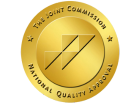Epilepsy, also known as “seizure disorder,” is the fourth most common neurological disorder in people, regardless of age. As a chronic condition, epilepsy is the clinical term for the recurrence of unprovoked seizures. Epilepsy is commonly related to a person’s genetics, but it can also present itself after brain injury and illness.
Seizures are the abnormal movements and behavior that are a result of unusual electrical activity within the brain. Seizures are extremely dangerous and sometimes fatal.
Common side effects of seizures are:
- Falling (Broken bones or injury)
- Drowning
- Car accidents
- Pregnancy complications
- Emotional health issues
- Heart conditions
- Respiratory conditions
- Additional brain damage
- SUDEP (Sudden Unknown Death in Epilepsy)
Seizures strip the person of their bodily functions and control for a period of time, making the risk of injury extremely high. Medical support and administration of effective anticonvulsant drugs are crucial for people with epilepsy.
Your Brain on Drugs
Drug intoxication and withdrawal commonly result in the complication of seizures. The consistent exposure to certain chemicals in medication can also lead to epilepsy. As a result, the repetitive and prolonged seizures lead to permanent and continuous neurological damage, heart and respiratory damage, and death.
Drug-induced Seizures
When a drug is introduced into the system, it alters neural pathways (alteration of brain function). The chemical components of the drug trigger the release of excitatory (think: excite equals “start”) or inhibitory (inhibit, or “stop”) transmitters and receptors within the pathways of the brain. The resulting disturbance in the system presents as a drug-induced seizure.
Many drugs can also promote seizure activity indirectly. When a drug affects the body’s brain, lungs, heart, or metabolism, a seizure can occur. Drug exposure can lower a person’s heart rate, which can in turn affect the blood flow to the brain– this can cause a seizure. Certain drugs can interfere with oxygen delivery on a cellular level, which can also result in seizures.
The most common presentation of a drug-induced seizure manifests as a tonic-clonic seizure, also known as a grand mal seizure. Grand mal seizures cause an abrupt loss of consciousness and body convulsions. These seizures eliminate a person’s control over their mental and physical functions for a period of time. Prolonged muscle convulsions can deprive part of the body or the entire body of oxygen, dangerously increase blood pressure and heart rate, and raise the core body temperature to extremes. Without treatment, these conditions can lead to devastating organ damage or death.
Drug-withdrawal Seizures
Drug-withdrawal seizures often occur because the brain adapts and acclimates to the chronic introduction of high doses of drugs that have strong inhibitory neuronal (brain) function; once the inhibitory transmitters are suddenly stripped from the brain, the brain goes into shock, causing acute withdrawal seizures.
Your Brain on Alcohol
Alcoholism and alcohol withdrawal can result in seizures and epilepsy. These seizures can provoke the deterioration of brain functionality as long side other major organs. Organ impairment can lead to intense pain and death.
Alcohol-induced Seizures
The most common health problem associated with alcoholism is typically liver disease, but chronic heavy drinking can also lead to epilepsy. Alcohol-induced seizures are similar to drug-induced seizures in that they are often an indirect cause. Alcohol abuse adversely affects multiple organ systems that can damage the brain’s ability to receive oxygen and blood flow. Consequently, the complications caused by alcoholism can result in seizures.
Alcohol-withdrawal Seizures
Alcohol intoxication affects channels and neurotransmitter receptors within the brain. Subsequently, the brain changes as a reaction to prolonged exposure to alcohol. The brain’s compensation results in alcohol dependence. As a result, once alcohol is no longer introduced to the body, withdrawal sets in and demonstrates the brain’s inability to function without alcohol because of the changes it made to enable the abuse. Alcohol withdrawal syndrome features tremors, blackouts, delirium tremens, and seizures. Alcohol-withdrawal seizures can range from six hours to two days following the discontinuation of alcohol.
Tonic-clonic seizures are the most common alcohol-related seizure, but partial seizures can also occur. Unlike tonic-clonic seizures, partial seizures do not affect consciousness. Partial seizures can affect muscle function, autonomic function (blinking, breathing, heart rate, etc), emotional function, and sensory function (smell, sight, hearing, etc). Alcohol-withdrawal can also include delirium tremens (DTs) alongside seizure activity. DTs, like seizures, are a neurological reaction including nervous system excitation. Along with seizures, delirium tremens can include fever, tremors, severe disorientation, and hallucinations.
If you or a loved one is struggling with alcohol and drug use, please reach out to Royal Life Centers for substance abuse treatment.
- The Risks of Taking Sudafed and Alcohol - November 3, 2023
- Tips for How To Stop Drinking Alcohol - September 12, 2023
- What Are the Withdrawal Symptoms of Fentanyl? - August 16, 2023













